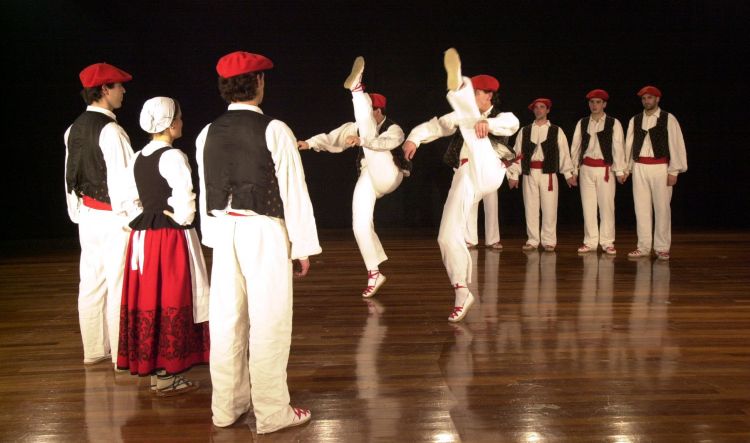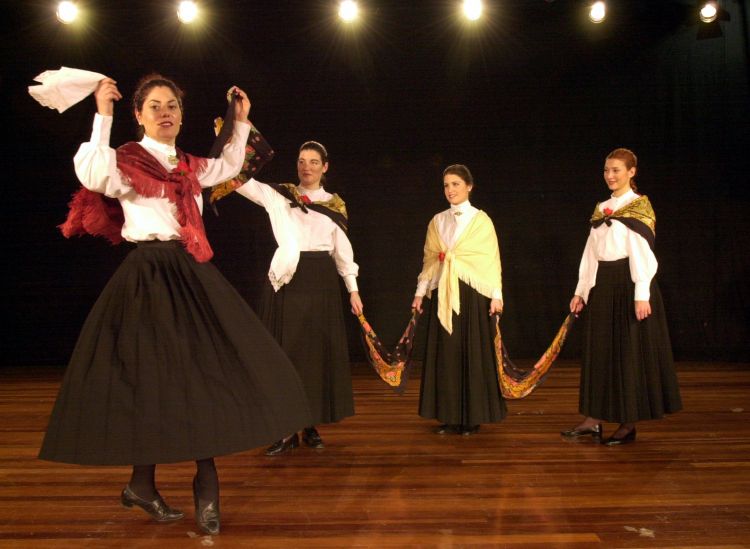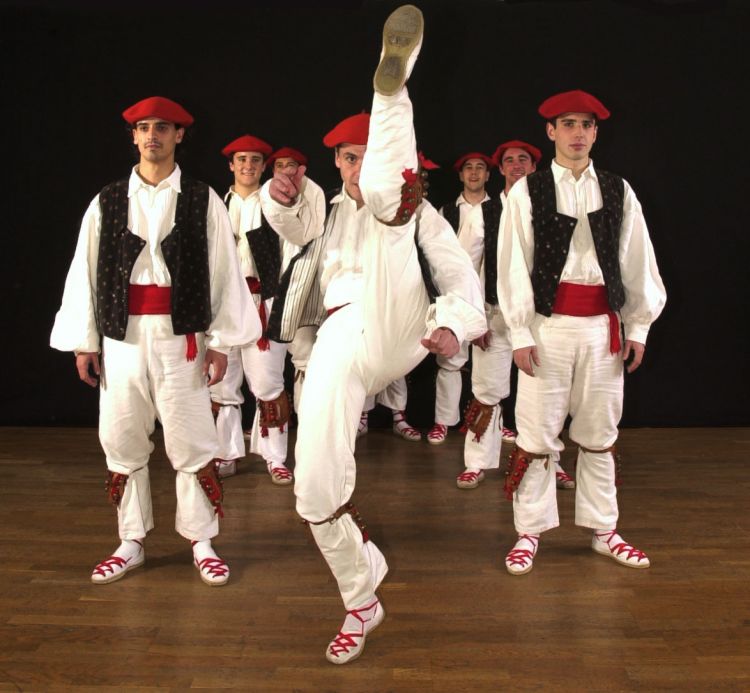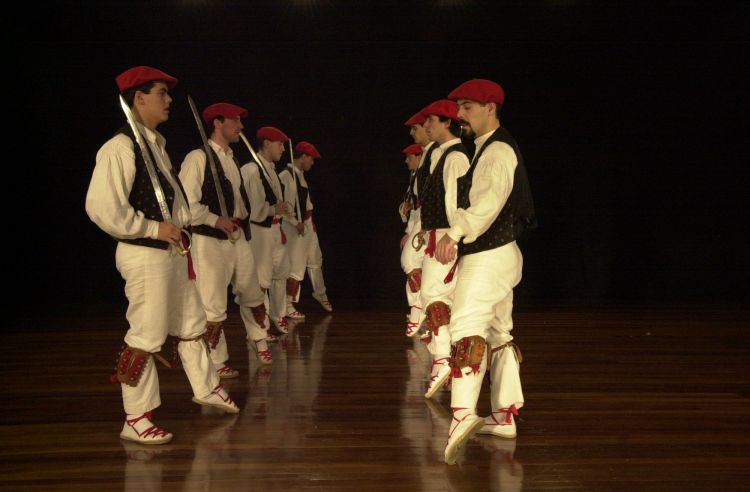Arin Arin and Fandango
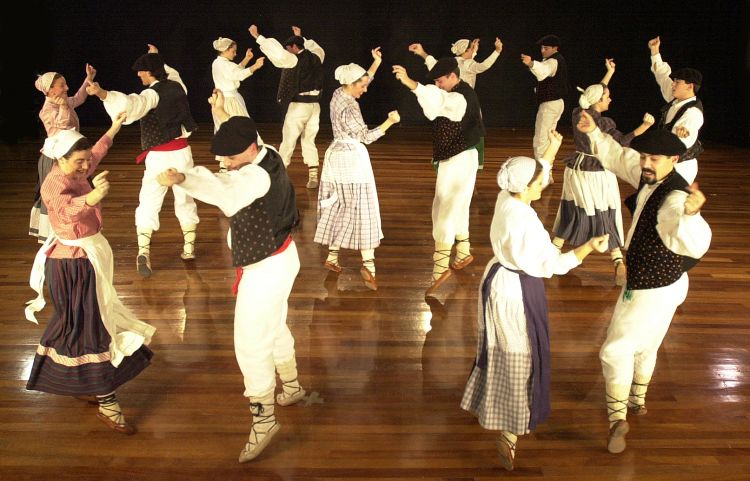
We can therefore find similar dances throughout the north of the peninsular, performed by a man facing two women and vice-versa, or by two couples, and even by a circle of dancers. They are popular dances, which occasionally had they own words, where dancers from both sexes go from left to right and vice-versa and in time with the beat of the music and the drum.
It is a dance that is performed by a couple or trio of dancers, which can be made up by two men and a woman or vice-versa, or in a circle. It is therefore a social mixed dance in the sense that it is part of society and both sexes take part. According to the various researchers, the dancing style is typical of the south of the peninsula that, closer to the culture that we call Arabic, and which gives greater importance to the movement of the arms and hands than the legs, could have been imported.
It should be noted that one of its special features is that the arms are raised up and make a angle in front of the dancers' eyes and shoulders, which is not often seen in the dances from the Basque country.
In any case, it would be a dance imported from the west of the peninsula and which had not yet become established in the north of Euskal Herria.
Traditional dances
Arin Arin
It may have a common origin that spread from the south of the peninsula towards the East on the one hand, and, on the other, through the West, through Portugal and Galicia, then turned eastwards along the Cantabrian coast. The Enciclopedia Auñamendi emphasises this and also states that the dance first of all became fashionable in Bizkaia, then in Gipuzkoa, where although J. I. IZTUETA rejected it for being foreign, it reached the coasts of Lapurdi well into the 19th century. The dance belongs to the structure known as "High", whose movements are quicker and more agile that the Orripeko or Fandango. This dance has also been called Porru Salda, and authors, such as OLMEDO, question whether or not it originally came from Bilbao.
Fandango
The dance belongs to the structure known as "low", compared to those known as "High", such as the case of Arin Arin. Therefore, the Fandango, whose name may have come from the Portuguese Fado, and Jota, which is to be found throughout the Iberian peninsula, may have a common origin that spread from the south of the peninsula towards the East on the one hand, and, on the other, through the West, through Portugal and Galicia, then turned eastwards along the Cantabrian coast. The Enciclopedia Auñamendi emphasises this and also states that the dance first of all became fashionable in Bizkaia, then in Gipuzkoa, where although J. I. IZTUETA rejected it for being foreign, it reached the coasts of Lapurdi well into the 19th century.
Clothing
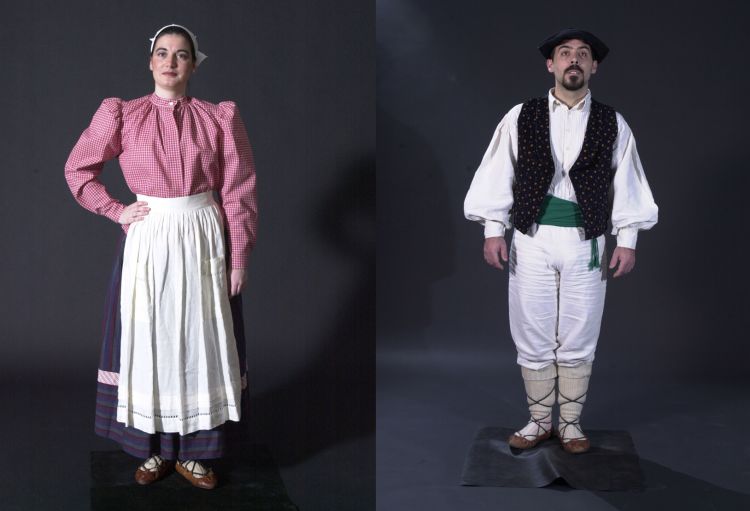
As it is a social and mixed popular dance, it does not have its own particular costumes and the clothing worn has changed over the years and reflected the fashions of each period. However, both the Orripeko or Fandango and the Porrusalda or Arin Arin are normally performed at the end of the ritual dances and it is therefore common to see them danced with the typical costumes for each celebration.
Implements
We are not aware of any implements used to perform this dance.
Music
As both the Fandango and the Arin Arin, the Low or High dances, are mixed social dances that are performed at the end of rituals and on random occasions, and independently of any other, they have been danced to the sounds of different musical instruments. The Txistu (whistle) and the Tabor drum, accompanied by the Silbote (one-handed flute) or the Atabal (cylindrial double-headed bass drum) on the one hand, or the Alboka (double clarinet) accompanied by the Tambourine, etc, have provided the music for the dances to be performed.
History and Geography
The origin of the Fandango or the Arin Arin, or Low and High dance, in the choreographic terminology used by Curt SACHS, is unknown. However, IZTUETA (18th century) seems to indicate that both were unknown at that time throughout most of the province of Gipuzkoa, and other authors seem to corroborate this statement when they point out that the influence of both dances, which surely originated in Arab countries, where the arm movements are more important than the legs, spread through the South, then towards the West and up to the North to reach the tip of the peninsular and then spread backwards across to the East.
This meant that the Fandango and the Arin Arin, the low and high dance, did not reach the Basque speaking region before the 16th or 17th centuries. IZTUETA, therefore treats them as dances that were foreign to the Basque Country and typical of Bizkaia, which indicates that they were not established in Gipuzkoa at the time he wrote. We can, therefore, place the Fandango and the Arin Arin in Bizkaia during approximately the 17th and 18th centuries, and they then spread eastwards to Gipuzkoa and Iparralde respectively.
The Enciclopedia Auñamendi (Eusko-Ikaskuntza.org) seems to corroborate this.

